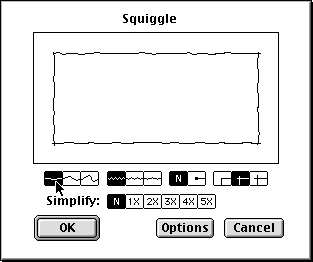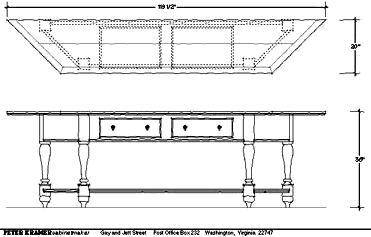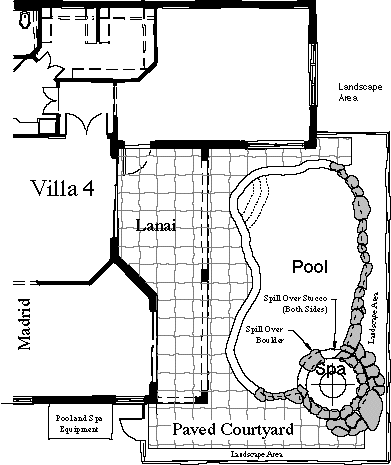
Squiggle |

Squiggle |
Squiggle converts selected objects into many-sided polygons to give the appearance of a line drawn by a shaking hand. Squiggle works by using a recorded series of points taken from a hand-drawn line and applying these to the shape.

In the Squiggle dialog, you can choose the roughness and spacing of the squiggled line, blobs on the ends of lines, and extensions on the ends of lines. The Simplify choice allows you to control the number of points in the new objects.

To use Squiggle, you selected the objects to be squiggled, and then choose Squiggle from the Tool menu. For example, in this drawing for a table was squiggled for a presentation to a client.
Squiggle can be used to squiggle a single line or an entire drawing to irregular wavy lines for that hand-drawn look. Its popularity has surprised everyone and it's now widely used by architects for presentations to clients in the early stages of a design.
|
"Most people outside architecture don't understand the design process. If I show clients a proposed design, they're reluctant to criticize it if the drawing has hard lines--it looks finished. However, if the lines are rough and sketchy, they'll open up and start talking about what they want, and how the design could be changed to suit them. So the Squiggle command is of vital importance to me just to get clients to talk about the design." Michael Spencer |

Michael Spencer squiggles his drawings to get
clients to open up and start talking about what they want.